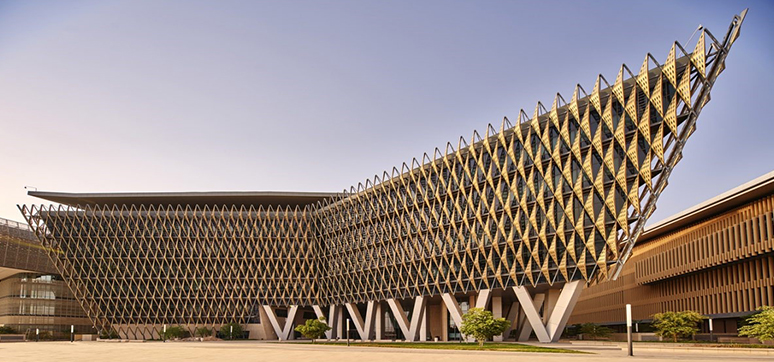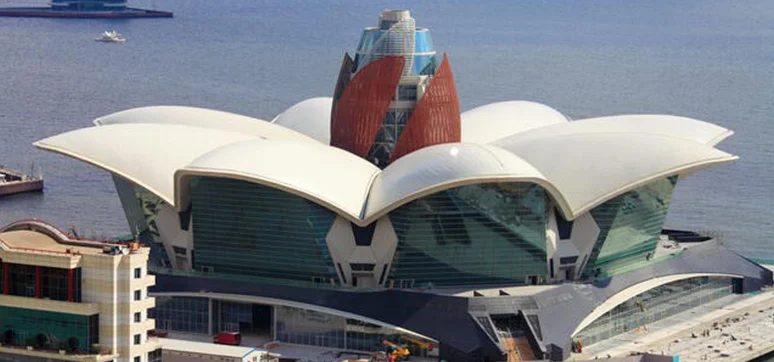Glass has become a transformative material in modern architecture, offering a multitude of advantages that go far beyond its aesthetic appeal. As a favored façade material, it allows for sleek and versatile designs, maximizes natural light penetration, and fosters a strong connection with the surrounding environment. Moreover, innovations like low-emissivity coatings have significantly contributed to the energy efficiency of glass, making it a sustainable choice for modern buildings. In regions with abundant sunlight, such as the Gulf, glass façades play a crucial role in optimizing energy savings by reducing the need for artificial lighting and cooling.
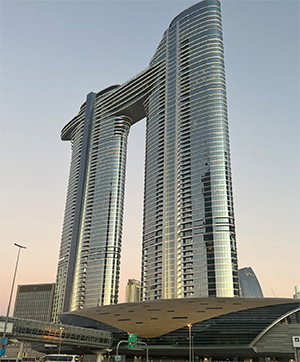
The choice of glass type and coatings also plays a pivotal role in determining a building’s energy efficiency and thermal performance. Factors like double or triple glazing, Low-E coatings, and tinted or reflective glass impact insulation and solar control, make it essential to consider local climate and environmental conditions. In this era of evolving technology and sustainability goals, architects and designers are increasingly focused on specifying the right glass for façades. They prioritize energy efficiency, coatings for glare control and aesthetics, and manufacturers committed to sustainability and recyclability. Glass thickness, insulation, and maintenance are also critical considerations in ensuring the longevity and performance of glass façades. Additionally, glass’s role in enhancing natural daylighting and occupant well-being, as well as its impact on acoustic insulation and noise reduction in urban environments, cannot be overlooked.
This cover story is based on expert opinions and delves into the key advantages of using glass as a façade material, the impact of glass type on energy efficiency, the role of different glass coatings, and various challenges and solutions in managing solar heat gain in hot climates. It also discusses the considerations for architects and designers when specifying glass façades for sustainability and environmental impact, the effect of glass thickness and insulation on thermal performance, recent innovations in glass façade design and engineering, and the contribution of glass to natural daylighting and occupant well-being.
Key Advantages of Using Glass as a Façade Material

Glass as a façade material in modern architecture offers a multitude of advantages. Its aesthetic enhancement allows for sleek designs, maximizing natural light and fostering a connection with nature. With innovations like low-emissivity coatings, glass promotes energy efficiency. Its versatility, customization options, durability, and low maintenance make it a favored choice, contributing to a modern brand image and aligning with sustainability goals, believes Firoz Kachwala, Director, of Future Architectural Glass.

Glass is a transformative material in modern architecture, especially in the Gulf region. It allows for aesthetic versatility, and natural light penetration, and offers unobstructed views. In regions with abundant sunlight, glass façades can significantly contribute to energy savings by optimising daylight use, and reducing the need for artificial lighting, says Fadi Massouh, Construction, Tech & Real Estate Professional.
According to Kareem Kamel, Façade & Steel Structural Engineer, glass façade transparency allows for daylight saving, natural interior enlightening, and connectivity to the exterior, they help create an appealing feeling, also glass is a durable material, it can withstand harsh conditions and frequent exposure to direct sunlight.
The Impact of Glass Type on the Energy Efficiency of a Building’s Façade
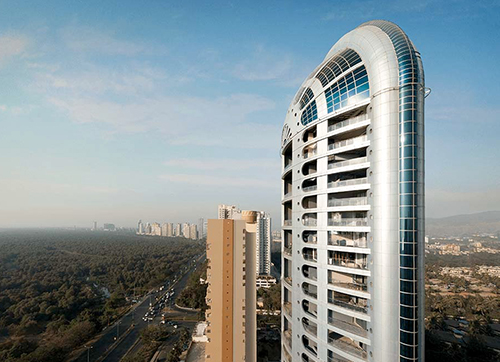
The selection of glass type plays a pivotal role in determining a building’s energy efficiency. Variables like double or triple glazing, Low-E coatings, tinted or reflective glass, and the adoption of smart glass impact insulation, solar control, and lighting. It’s crucial to factor in U-values, R-values, and local climate. Incorporating smart design elements such as thermally broken frames and maximizing natural ventilation adds to the overall energy performance. In essence, choosing the right glass type is fundamental to establishing an energy-efficient building façade, notes Kachwala.
The choice of glass is crucial. Low-E glass and tinted glass are popular in the Gulf to minimize solar heat gain and enhance energy efficiency. Double and triple-glazing units with inert gas fillings are also used to improve thermal performance and reduce cooling loads, says Fadi. Kareem believes that the type of glass selected has a significant contribution to façade isolation, U-value is the term used to describe thermal insulation, the lower the better. Single panels have the lowest U-value, insulating units which consist of 2 or more single panels separated by an air or gaseous spacing significantly reduce the U-value of the glazed unit, the air space acts as a thermal barrier, helping to keep the building warm in the winter and cool in the summer.
Different Types of Glass Coatings and Their Role in Enhancing the Performance of a Glass Façade
Kachwala elaborates that each type of coating addresses specific aspects, combining functionality, aesthetics, and practicality to optimize the overall performance of the glass façade.
Energy: Solar coatings, multi-functional Low-E coatings (single, double, or triple), play a pivotal role in controlling energy transfer, effectively minimizing heat loss or gain.
This enhances the overall energy efficiency of the building by reducing the need for excessive heating or cooling.
Aesthetics: Tinted substrates and/or colored reflective coatings, contribute to the visual appeal of the glass façade.
They reduce glare and control heat absorption, improving the comfort of the interior. Reflective coatings add a modern and sleek appearance while mitigating solar heat gain.
Maintenance: Self-cleaning coatings use innovative technologies to break down and remove organic materials, reducing the need for manual cleaning.
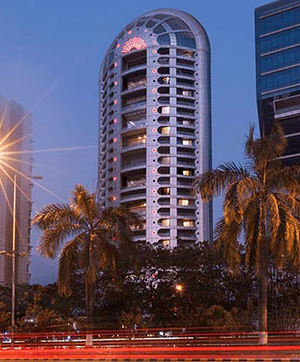
Selecting the right glazing solution for the project is a complex study of various options available in the industry. Future Glass has established partnerships with prominent coating manufacturers, including Guardian, Saint-Gobain, Vitro, Pilkington, AGC & Galstroesch. The solution-driven approach adapted by the highly qualified and experienced sales force of Future Glass enables us to evaluate all the available options and offer the right solution based on each project’s specific needs.
Glass coatings are essential for enhancing façade performance. Reflective coatings help in reflecting solar radiation, reducing heat gain. Low-E coatings minimize the amount of ultraviolet and infrared light that can pass through glass without compromising light transmittance. These coatings are pivotal in the Gulf to manage the intense solar conditions, explains Fadi.
Challenges and Solutions for Mitigating Solar Heat Gain in Glass Façades (Especially in Hot Climates)
The classification of materials in the event of a fire looks like A-s1-d0 where:
Challenges:
- Solar Heat Gain: Glass façades in hot climates face excessive heat, leading to increased indoor temperatures.
- Glare: Intense sunlight causes glare, impacting visual comfort for occupants.
- Energy Consumption: Higher air conditioning usage contributes to increased energy consumption.
Solutions:
- Solar Coatings: Use solar coatings to minimize heat absorption and glare. • Low-E Coatings: Apply Low-E coatings to reflect or absorb solar radiation, reducing heat transfer.
- High-Performance Glazing: Use multi-functional coatings that combine the benefits of Solar and low-E coatings providing an ideal solution. Future Glass recommends the usage of double/triple silver multi-functional LowE coatings to be incorporated as an ecoTHERM (Insulated Glass unit) to achieve optimum light transmission while achieving the HVAC requirements of the building.
- Shading Devices: Employ exterior shading devices to block direct sunlight.
- Dynamic Glazing: Implement smart glazing that adjusts tint based on light conditions. DYNAMICVIEW is an innovative glazing solution that is the most advanced façade glazing technology currently available. DYNAMICVIEW enables the façade to react to the changing environmental conditions and provide the most sustainable façade.
– Firoz Kachwala, Director, Future Architectural Glass
In hot climates, managing solar heat gain is challenging. Solutions include using high-performance glazing, incorporating shading devices, and optimizing façade orientation. External shading, in particular, is effective in the Gulf, as it blocks direct sunlight while allowing diffused light to enter, says Fadi.
Considerations Architects & Designers Keep in Mind When Specifying Glass Façades for Sustainability and Environmental Impact
Kachwala suggests following pointers for architects when specifying glass façades for sustainability
- Prioritise energy efficiency with low SHGC and high VLT
- Consider coatings and tints for glare control and aesthetics
- Choose manufacturers committed to sustainability, prioritizing recyclability
- Adhere to safety standards, assess acoustic properties, and conduct life cycle assessments
According to Kareem, key aspects include selecting energy-efficient glazing, and sizing openings to balance daylighting with overheating risks, for example, it is natural for Northern countries with low temperatures to design façades that allow for more sunlight entrance while countries in hot climates must be careful in when choosing the area of windows and doors subject to direct sunlight.
Effect of Glass Thickness and Insulation Affect a Building’s Thermal Performance and Comfort Levels
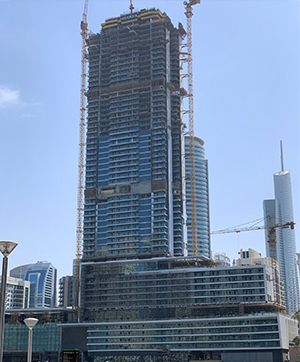
“The thickness of glass and its insulation significantly influence a building’s thermal performance and comfort. Thicker glass tends to absorb more heat, impacting the internal and external temperature. The decision to increase glass thickness is often driven by safety considerations and wind load requirements. Additionally, incorporating insulation, such as Insulated Glass Units (IGUs), our ecoTHERM product plays a crucial role in enhancing thermal performance, contributing to improved comfort levels within the building”, Kachwala.
Thicker glass and enhanced insulation improve thermal performance and comfort levels by reducing heat transfer and mitigating temperature fluctuations. In the Gulf, insulated glass units (IGUs) with optimal thickness and gas fillings are standard to combat the extreme heat conditions. Higher glass thicknesses also offer stronger wind resistance, in high-rise buildings the correct glass thickness needs to be selected otherwise the glass might not withstand the high winds, advises Fadi.
Kareem explains that thicker glass provides better insulation, but it also reduces the amount of natural light that enters a building, Glass thickness and insulation affect the comfort levels of occupants in a building. Thicker glass and insulation can help to reduce heat loss in the winter and heat gain in the summer, making the building more comfortable to live in. Additionally, insulation can help to reduce noise transmission from the outside world, making the building quieter.
The optimum glass thickness of your building will depend on several factors, including the climate, the orientation of the building, and of course your budget. Glass manufacturers now offer digital calculator tools that can be used to compute the U-value of a glass unit before it is implemented in a project. These tools are typically easy to use and provide reasonable results. s a great way to ensure that you are choosing the right glass for your project. by knowing the U-value of the glass, you can select a glass unit that will help you achieve your desired energy efficiency goals.
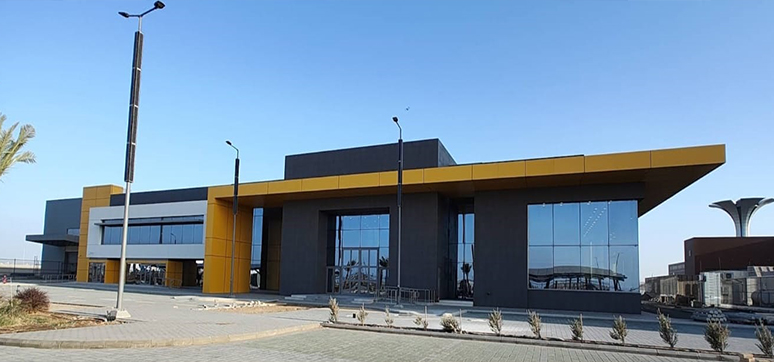
Innovations or Advancements in the Design & Engineering of Glass Façades in Recent Years
“New smart glass technologies have found their way in the industry including liquid crystal-based products and electrochromic coatings that provide privacy and dynamic controls. Future Glass offers a DYNAMICVIEW glazing solution for dynamically controlling the light/ heat gain thereby providing the best façade glazing solution in the industry. Also, our MEDIAVIEW glazing solution features glass with LEDs incorporated inside it allowing the building owner to display HD-quality video on their façade and provide the capability to make interactive displays. For structural innovation, the industry has made efficient use of Frameless systems and cable net façades that offer a minimalist aesthetic for modern architectural design”, Feroz Kachwala.
Recent advancements include the development of smart glass technologies, such as electrochromic glass, which can change transparency in response to electrical voltage, allowing dynamic control over light and heat. Additionally, innovations in structural glazing techniques have enabled the creation of more complex and visually striking façade designs, notes Fadi.
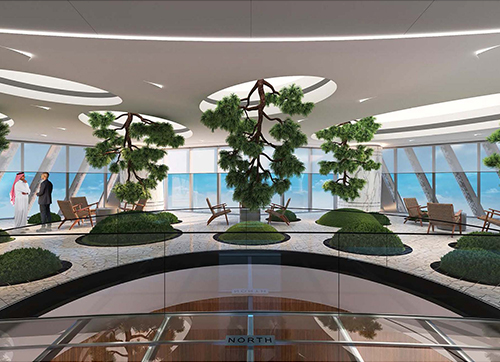
Kareem says computational engineering opened a whole new type of possibilities for building envelopes. Parametric engineering allows engineers to create and modify complex geometric shapes with ease. Visualizing multiple design options for façade shapes and styles. This is particularly useful for designing façades with complex geometries, such as freeform surfaces or double-skin façades. For example, parametric engineering can be used to design façades that respond to changing environmental conditions, such as sunlight and temperature.
Contribution of Glass Façades to Natural Daylighting & Occupant Well-Being in Buildings
According to Kachwala, glass façades are not just about aesthetics; they are key to a healthier indoor environment. By flooding spaces with natural light, they reduce the need for artificial lighting and create a visually comfortable atmosphere. This connection with the outdoors promotes well-being and aligns with basophilic design principles. Studies show that exposure to natural light improves productivity and satisfaction, making glass façades a smart choice for both form and function Glass façades optimise natural daylighting, enhancing occupant well-being and productivity by creating a connection with the outside environment and regulating circadian rhythms. Properly designed glass façades in the Gulf can balance daylighting needs with thermal comfort, reducing reliance on artificial lighting and air conditioning, says Fadi.
Maintenance Requirements or Considerations for Long-Term Durability When Using Glass as a Façade Material
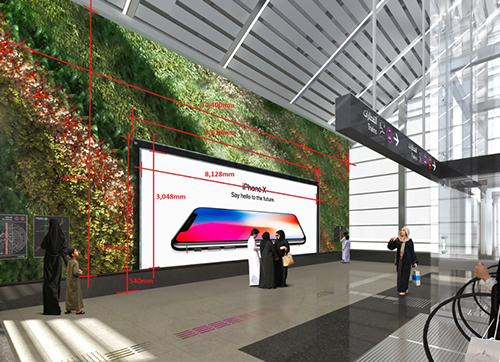
Kachwala believes that regular maintenance is crucial for preserving the longevity and aesthetic appeal of a glass façade. Routine cleaning is essential to prevent the accumulation of dirt, ensuring the transparency of the glass. Simultaneously, it is imperative to inspect and maintain frames and sealants regularly, safeguarding against water infiltration and maintaining structural integrity. This dual approach to cleaning and maintenance not only enhances the façade’s visual appeal but also contributes to its overall durability. To further fortify the structure, scheduling periodic professional inspections is recommended. These inspections serve to comprehensively assess the façade’s condition, identify potential issues, and implement preventive measures, ultimately contributing to the long-term resilience of the glass façade.
Glass façades require regular cleaning and maintenance to preserve their aesthetic and functional qualities. In regions with high sand and dust levels, like the Gulf, selecting glass with easy-to-clean coatings and robust sealing systems is essential for long-term durability. There are also new types of technologies that incorporate self-cleaning for the glazing, believes Fadi.
Glass façades require periodic cleaning, especially in urban environments with higher pollutant levels. Inspection of sealants is important for catching leaks before damage occurs. Proper drainage, flashing, and waterproofing protect substrate materials long-term as well, suggests Kareem.
The Safety Aspects of Glass Façades, Including Concerns Related to Breakage and Impact Resistance
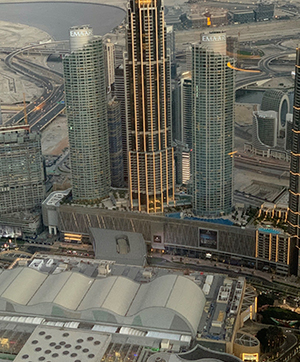
Ensuring safety in our glass façades involves a dual strategy. On the ground floor, we utilise tempered glass, specifically our ecoSHIELD (Tempered) product, which is five times stronger than annealed glass, providing exceptional resistance to high-impact loads. Above 10 meters we usually recommend ecoFAÇADE (Heat Strengthened) because it will be breaking into smaller, safer pieces upon fracture. Adherence to local building codes and safety standards guides our glass selection process. Regular maintenance and inspections, prompt replacement of damaged glass panels, and emergency planning for high-traffic areas contribute to a secure and resilient glass façade. This comprehensive approach ensures safety without compromising on the aesthetic and functional aspects of our architectural design, says Kachwala.
Safety laminated glass is crucial to prevent injuries due to breakage and to enhance impact resistance. Façade designs should also consider wind loads, especially in high-rise buildings in the Gulf, where high winds can pose significant challenges. Safety glass is important also for glass showers and especially important for glass balustrades, says Fadi.
Safety Aspects of Glass Façades
- Thermal stress: When glass is exposed to a sudden temperature change, such as a fire or hot blast, it can expand and contract rapidly, causing it to break.
- Edge Hit: Glass edges are sensitive and the breakage pattern spreads massively when it is on the edge point
- Brittle nature: Glass is a brittle material, which means that it is strong under compression but weak under tension. This means that glass is more likely to break when it is subjected to a force that is trying to pull it apart, sometimes the breakage happens without an obvious reason. It may be a manufacturer defect or faulty installation.
- Some precautions that decrease the breakage possibility and increase safety measurements:

- Use tempered \/Heat Strengthened glass: Tempered glass is more impact-resistant than regular glass and is therefore a good choice for glass façades.
- Use laminated glass: Laminated glass is made up of two or more layers of glass bonded together with a PVB interlayer. This makes it more resistant to breakage and impact.
- Inspection and testing: Glass façades should be regularly inspected and tested to identify any damage or defects.
– Kareem Kamel, Façade & Steel Structural Engineer
Role of Glass in Acoustic Insulation and Noise Reduction in Urban Environments
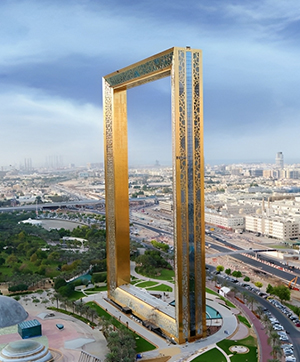
Kachwala believes that double or triple glazing, combined with laminated glass, effectively reduces sound transmission. Well-sealed frames, soundproofing, and thicker glass impede sound waves, while acoustic films and coatings enhance sound absorption. Strategic placement of sound-resistant glass in high-noise areas ensures a quieter indoor environment. Enhanced acoustic interlayers from Kuraray or Eastman also help in having a considerable sound reduction. In urban planning, collaboration with planners, adherence to regulations, and the use of acoustic glass contribute to creating peaceful living environments. This comprehensive approach ensures a harmonious and comfortable experience in indoor spaces. Future Glass team understands the acoustic requirements of the building depending on the outside noise parameters and suggests suitable glazing combinations to achieve comfortable working / living spaces.
Glass plays a pivotal role in acoustic insulation. Double or triple glazing with varied glass thickness and laminated glass can significantly reduce noise levels, essential in the bustling urban environments of the Gulf region, believes Fadi.
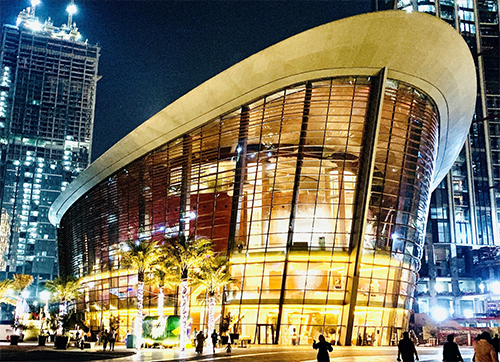
The thickness of the glass is an important factor that can help to block sound waves from entering a building, as thicker glass is more effective at blocking sound waves. Typically, 6mm thick monolithic glass, has a lower STC value than 12mm thick, glass STC can reach 36Dbs, whether it’s single piece monolithic glass, laminated glass, or insulated glass, the thicker the total glass thickness, the better sound transmission loss. Using air spaces of different thicknesses in a double-pane or triple-pane glass unit can help to improve the acoustic performance of the glass, generally, the thicker the air space the more increase in sound transmission loss, says Kareem.
The Future of Glass as a Façade Material Evolving in Response to Technological Advancements & Sustainability Goals
The evolution of glass façades in the future will be marked by smart glass technologies, incorporating dynamic control for enhanced transparency and energy efficiency. Innovations in nanotechnology, recyclable materials, and sustainable production methods are set to elevate glass properties. Anticipate advancements such as improved acoustic features, customizable options for architects, and seamless integration with Building Information Modeling (BIM). Additionally, transparent solar cells and a commitment to carbon-neutral production will play pivotal roles in fostering a more sustainable and technologically advanced era for glass façades, believes Kachwala.
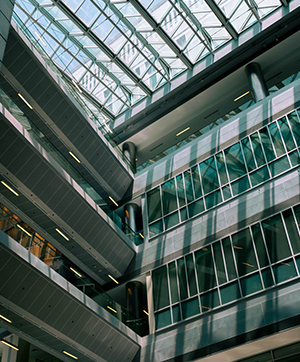
The future of glass façades is promising, with ongoing innovations focusing on enhancing energy efficiency, sustainability, and adaptability. Developments in nanotechnology and material science are likely to produce glass with improved thermal performance, self-cleaning properties, and enhanced strength, making it even more suitable for demanding climates like those in the Gulf region, notes Fadi. Kareem opines that AI will have the greatest effect. AI can be used to design façades that can adapt to changing environmental conditions, such as sunlight and temperature.
This can help to improve energy efficiency and occupant comfort. Façades that generate energy. it can also be used to design façades that can generate energy, such as solar panels or wind turbines. This can help to reduce a building’s reliance on the grid and make it more sustainable. AI can also be used to design façades that are interactive and responsive to users. For example, a façade could be programmed to change color or pattern in response to human movement or weather conditions.
Conclusion
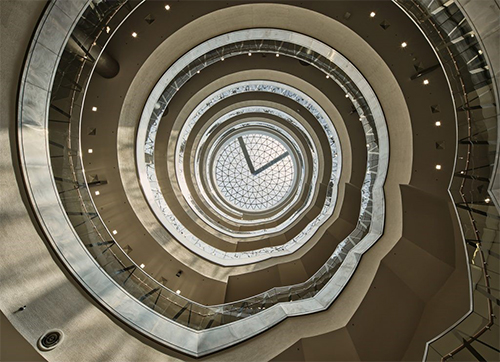
The use of glass as a façade material in modern architecture has brought about a transformative revolution in the way buildings are designed and constructed. Its advantages extend far beyond aesthetics, encompassing energy efficiency, sustainability, and occupant well-being. Architects and designers are now tasked with the crucial responsibility of selecting the right glass type and coatings to optimize these benefits while addressing local climate challenges.
Innovations in smart glass technology, sustainable production methods, and AI integration are driving the future of glass façades, promising even greater energy efficiency and adaptability. As the industry evolves, the enduring appeal of glass lies in its ability to seamlessly blend form and function, enhancing the way we live and work while contributing to a more sustainable and technologically advanced architectural landscape.
